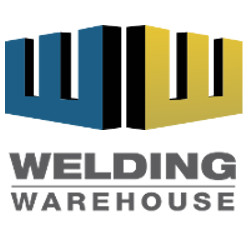AWS A5.21 Bare Electrodes & Rods for Surfacing
ERCoCr-A
Cobalt 6
ERCoCr-A electrodes and rods are characterized by a hypoeutectic structure, consisting of a network of about 13% eutectic chromium carbides distributed in a cobalt-chromium-tungsten solid solution matrix. The result is a material with a combination of overall resistance to low stress abrasive wear, with the necessary toughness to resist some degree of impact. Cobalt alloys also are inherently good for resisting metal-to-metal wear, particularly in high load situations that are prone to galling. The high-alloy content of the matrix also affords excellent resistance to corrosion, oxidation, and elevated temperature retention of hot hardness up to a maximum of 1200°F (650°C). These alloys are not subject to allotropic transformation and therefore do not lose their properties if the base metal is subsequently heat treated.
Colbalt #6 is recommended for cases where wear is accompanied by elevated temperatures and where corrosion is involved, or both. Some typical applications are automotive and fluid flow valves, chain saw guides, hot punches, shear blades, and extruder screws.
ERCoCr-B
Cobalt 12
ERCoCr-B electrodes and rods are similar in composition to deposits made using ERCoCr-A (Cobalt 6) electrodes and rods, except for a slightly higer percentage (approximately 16%) of carbides. The alloy also has a slightly higher hardness and better abrasive and metal-to-metal wear resistance. Impact and corrosion resistance are lowered slightly. Deposits can be machined with carbide tools.
ERCoCr-B (Cobalt 12) electrodes and rods are used interchangeably with ERCoCr-A (Cobalt 6) electrodes and rods. Choice will depend on specific application.
ERCoCr-C
Cobalt 1
ERCoCr-C has a higher percentage (approximately 19%) of carbides than deposits made using either ERCoCr-A (Cobalt 6) or ERCoCr-B (Cobalt 12). In fact, the composition, is such that primary hypereutectic carbides are found in the microstructure. This characteristic gives the alloy higher wear resistance accompanied by reductions in the impact and corrosion resistance. The higher hardness also means a greater tendency may be minimized by closely monitoring preheating, interpass temperature, and postheating techniques.
While the cobalt-chromium deposits soften somewhat at elevated temperatures, they normally are considered immune to tempering. ERCoCr-C electrodes and rods is used to build-up items such as mixers, rotors or wherever harsh abrasion and low impact are encountered.
ERCoCr-E
Cobalt 21
ERCoCr-E electrodes and rods have very good strength and ductility in temperatures up to 2100°F (1150°C). Deposits are resistant to thermal shock, oxidizing, and reducing atmospheres. Early applications of these types of alloys were found in jet engine components such as turbine blades and vanes.
The deposit is a solid solution straightened alloy with a relatively low weight-percent carbide phase in the microstructure. Hence, the alloy is very tough and will work harden. Deposits possess excellent self-mated galling resistance and also are very resistant to cavitation erosion.
ERCoCr-E electrodes and rods are used where the resistance to thermal shock is important. Typical applications; similar to those of deposits made using ERCoCr-A (Cobalt 6) electrodes and rods; guide rolls, hot extrusion and forging dies, hot shear blades, tong bits, valve trim, etc.
